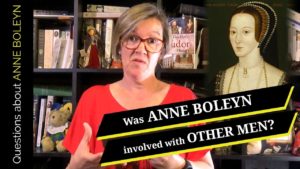 In today’s instalment of my video series “Questions about Anne Boleyn”, I consider the other men (apart from the obvious man, Henry VIII!) that Anne Boleyn was involved with or linked to.
In today’s instalment of my video series “Questions about Anne Boleyn”, I consider the other men (apart from the obvious man, Henry VIII!) that Anne Boleyn was involved with or linked to.
In Part 1, I look at the negotiations to marry Anne Boleyn off to James Butler of Ireland, and then Anne’s romance with courtier Henry Percy, son and heir of the Earl of Northumberland.
What happened with Butler and Percy? Why didn’t Anne end up with either of these young men?
Let me explain…
By the way, in this video, I mention my previous video “Was Anne Boleyn sent abroad because of her scandalous behaviour?”. That can be found at https://youtu.be/JyAVMfSxSbU.
The article I mention, which goes into more detail on the Butlers, can be found at https://www.theanneboleynfiles.com/negotiations-anne-boleyn-marry-james-butler/.